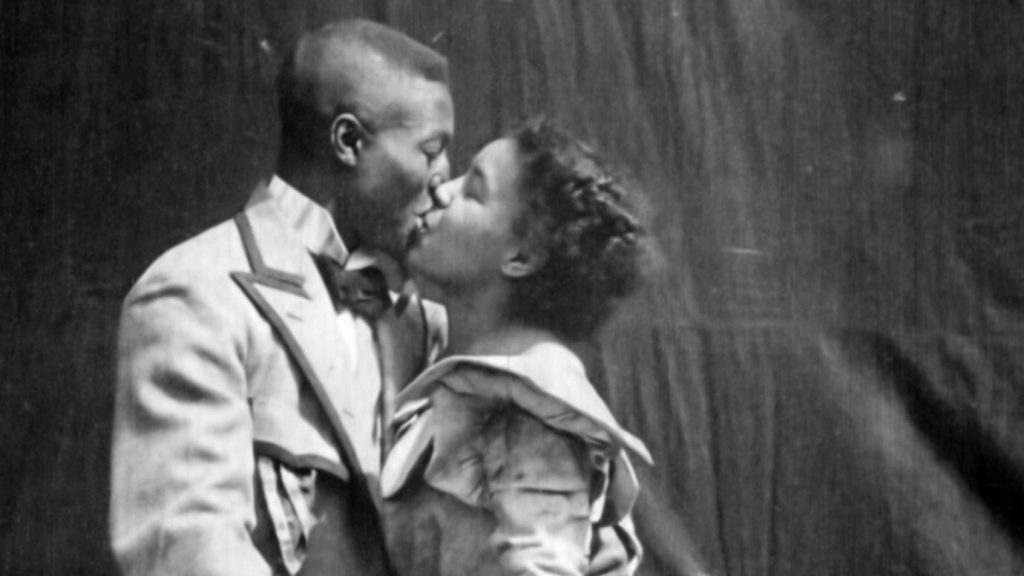Silent film of black couple’s kiss discovered, added to National Film Registry
By
Jack Wang
Dec 12, 2018
Something Good-Negro Kiss, the newly discovered silent film from 1898 is
believed to be the earliest cinematic depiction of African-American affection. Thanks to scholars at the University of Chicago and the University of Southern California, the footage is prompting a rethinking of early film history.
The film was announced Dec. 12 as a new addition to the Library of Congress’ National Film Registry—one of 25 selected for their enduring importance to American culture, along with Jurassic Park, Brokeback Mountain and The Shining. The 29-second clip is free of stereotypes and racist caricatures, a stark contrast from the majority of black performances at the turn of the century.
“It was remarkable to me how well the film was preserved, and also what the actors were doing,” said UChicago’s Allyson Nadia Field, an expert on African-American cinema who helped identify the film and its historical significance. “There’s a performance there because they’re dancing with one another, but their kissing has an unmistakable sense of naturalness, pleasure, and amusement as well.

“It is really striking to me, as a historian who works on race and cinema, to think that this kind of artifact could have existed in 1898. It’s really a remarkable artifact and discovery.”
An associate professor in UChicago’s Department of Cinema and Media Studies, Field first saw scanned frames of the film in January 2017. The footage was discovered by USC archivist Dino Everett, who found the 19th-century nitrate print within a batch of silent films he had acquired from a Louisiana collector nearly three years earlier.
In examining the film, Everett noticed physical characteristics that led him to believe the film was made prior to 1903.
“I told students, ‘I think this is one of the most important films I’ve come across,’” Everett said. “But my expertise is not in African-American cinema. I didn’t know if something like this was already out there.”
To find out, Everett reached out to Field, whom he had worked with when she was faculty at UCLA.
A scholar who specializes in both silent and contemporary African-American film, Field is the author of Uplift Cinema: The Emergence of African American Film & The Possibility of Black Modernity. Her 2015 book examined archival materials, such as memos and publicity materials, to explore how black filmmakers used cinema as a method of civic engagement in the 1910s.
To uncover the origins of Everett’s footage, Field relied on inventory and distribution catalogs, tracing the film to Chicago. This was where William Selig—a vaudeville performer turned film producer—had shot it on his knockoff of a Lumière Cinématographe. That camera produced the telltale perforation marks which had tipped Everett off to the print’s age.
With help from the Museum of Modern Art in New York, Field identified Saint Suttle and Gertie Brown, who in the clip are dressed in stage costumes common for minstrel performers.
Their performance is a reinterpretation of Thomas Edison’s “The Kiss,” featuring May Irwin and John Rice. Added to the National Film Registry nearly two decades ago, the 1896 film contained the very first on-screen kiss, and was also one of the first films to be publicly shown.
But less discussed is the fact that Irwin herself was a well-known minstrel performer—a fact that, Field argues, would have shaped how viewers understood both the Irwin-Rice kiss and Something Good-Negro Kiss. Indeed, the discovery of Something Good-Negro Kiss could prompt scholars to reevaluate their perceptions of the time period.
“This artifact helps us think more critically about the relationship between race and performance in early cinema,” Field said. “It’s not a corrective to all the racialized misrepresentation, but it shows us that that’s not the only thing that was going on.”
The discovery also offers a reminder to archivists and film scholars that cinematic knowledge is based on an incomplete record—and the hope that other significant pieces live on, tucked away in basements and storage units.
“I’m optimistic that lost films are just currently lost,” Everett said. “They’re not necessarily wiped off planet Earth. We can still make a lot of important finds.”
